Are you curious as to why your tires continue to vibrate even after you have balanced them? You are on the right page! We conducted research on this subject, and here is what we learned.
The following are potential causes of balanced tires that are still vibrating:
- Improper tire balance
- Tire runout
- Uneven tread wear
- Too much road force
- Conicity problems
- Dirt on tires
In this article, we’ll thoroughly discuss each of these causes. We'll also go over the rebalancing process as well as the typical price that a technician or auto shop would charge for the service. Keep reading!
Why Are My Balanced Tires Still Vibrating?
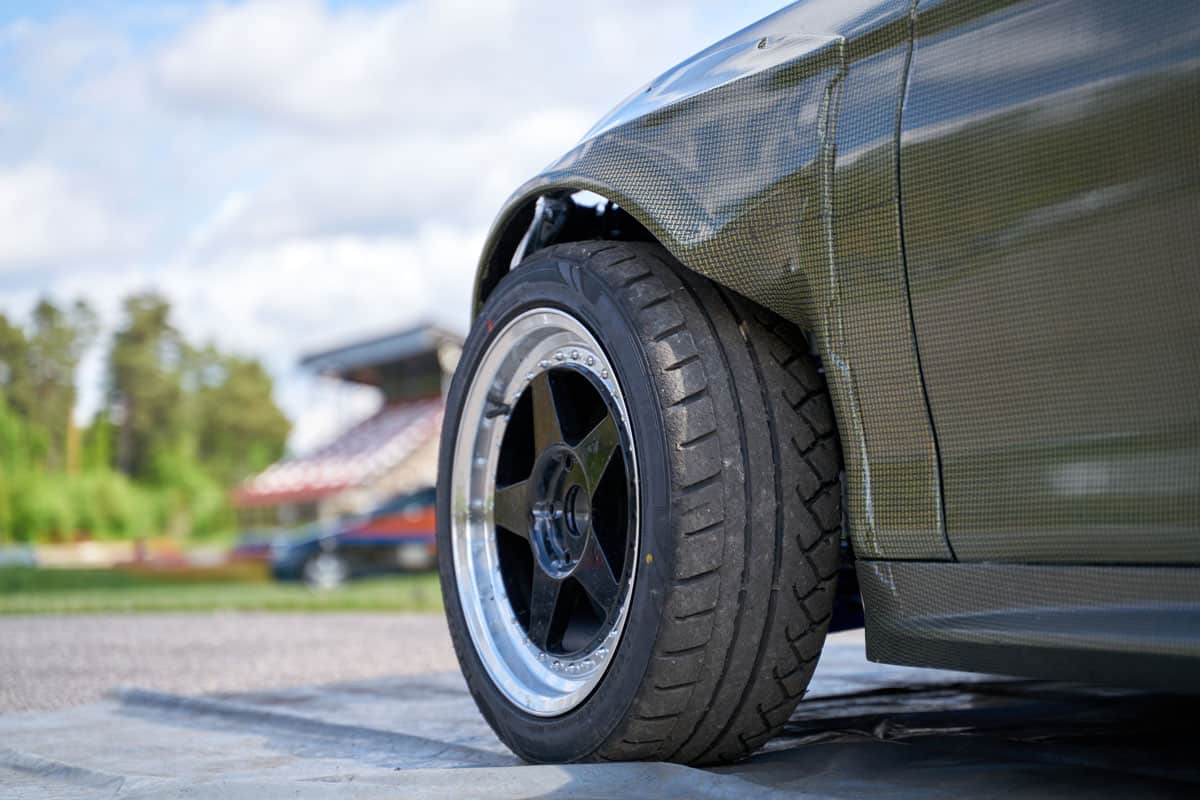
If you have just had your tires balanced, but the wheels are vibrating, something is wrong. Wheel vibration that is out of control can cause damage and lead to dangerous driving situations. Here are a few potential causes of this situation.
Improper Tire Balance
More than 60% of vibration-related repairs are due to improper wheel mounting or balancing. Regardless of what the machine is displaying, your tires will not balance if you utilize inaccurate equipment with an untrained operator.
You might have damaged cones or collets, a damaged spring or shaft, poor clamping, or another factor if you are getting static mounting errors on the balancer.
The basic tapered center is no longer found on many alloy wheels today. Wheels may also have a small aesthetic front in addition to the hub bore center's mating surface.
A cone or collet supporting the wheel on the structural taper is essential for correct balancing when a variety of taper angles are being used.
Inadequate contact might cause the wheel to move while it is being balanced, generating misleading readings that force a technician to chase after weights or add additional weight when the balancer requests it.
Perform a spin check and analyze your readings before attaching the wheel to the balancer. The wheel was either not centered on the second spin or the first spin if the balancer is not requesting the same weight amount in the same spots.
Check your mount's repeatability a second time. Prior to adding weight, you should try to get your imbalance readings as close to zero as you can.
Tire Runout
A wheel made of steel or an alloy may wobble or have a "low or high spot" as a result of manufacturing issues or road damage. Only a Road Force analysis system can detect this problem. A conventional tire balancer cannot.
The two types of tire runouts are lateral and radial. A tire's sidewall deviating from a straight line causes lateral runout, which can make the assembly wobble or move side to side as it rotates.
Less support is provided to your tire during rotation as lateral runout increases, which can lead to side-to-side motion and vibration.
However, if the vibration is strong, it might indicate radial runout. Radial is any difference in the roundness of a tire/wheel combination. The bigger the divergence from a perfect circle, the more runout there is.
This shortens the tire's lifespan by years and causes the tire to bounce up and down as it rotates. The vibrations from this produce noticeable discomfort and control issues for the driver as they travel up through the steering column.
Uneven Tread Wear
This might be another reason for vibration. Cross the tread with your hand both ways. Lack of rotation may have led to the development of a heel-and-toe or sawtooth wear pattern on the tread blocks if one direction feels harsher than the other (like toe wear).
The rear tires of front-wheel drive vehicles are most frequently affected by this type of wear. Even while the wear may not be visible to the naked eye, it is harsh enough to cause a bothersome vibration that feels like a faulty wheel bearing when traveling at medium to high speeds.
Once this kind of wear has started, rotating the tires is a waste of time since it takes too many miles to remove the uneven wear. Invest in new tires.
Too Much Road Force
The most frequent problem, after equipment issues, is probably a tire with too much "road force" or a high spot in the thread, which a tire balancer can't detect.
A tire that is not round will vibrate, harming both the tire and your car's suspension components. It will not roll smoothly. This is a flaw in the design of the tire, and replacement is typically the only way to fix it.
Conicity Problems
An off-center belt causes more weight to be distributed to one side of the tread than the other, making a tire lead to that side. Because the tire acts as though it were cone-shaped, this issue is known as a "conicity" problem.
The pointy end of a cone always moves in a circular motion. Therefore, a conicity pull will always have a direction (either left or right), and it can be corrected by rotating the front tires from side to side or by installing the troublesome tire on the rim backward.
Dirt On Tires
Examine the wheels first when determining the reason for a vibration issue. Keep an eye out for any dirt or mud packed into the back of the rim or any objects stuck in the tread. Not clearing the wheels of debris can cause an imbalance.
How Do You Rebalance A Car Tire?
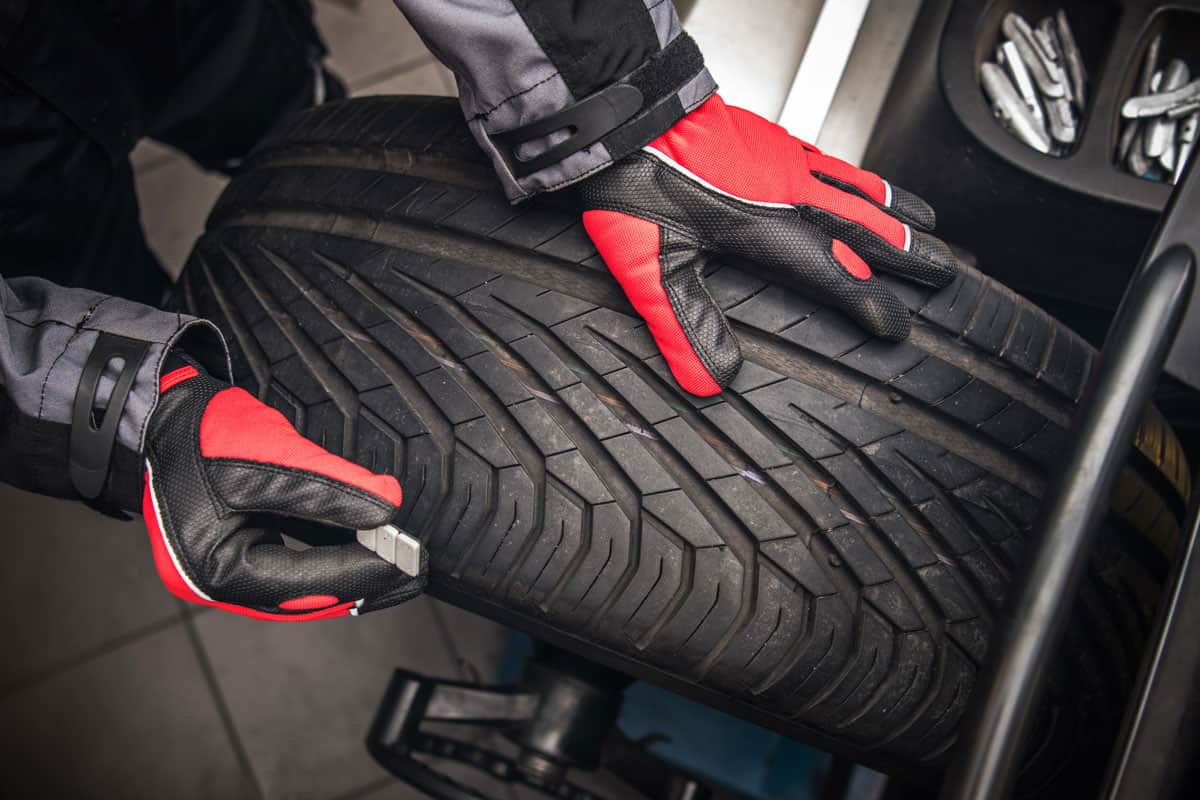
A tire balancer can fix your car wheels and the tire weight imbalances that can cause vibration. A smoother ride, less tire wear, and less drivetrain stress can all result from proper balancing.
Click here to see this tire balancer on Amazon.
When sensing vibrations that might come from an unbalanced tire, most people immediately head to a tire shop, but if you have the correct tools, you can often fix the problem yourself. If you are planning to rebalance your tire, below are the steps:
1. Put On Safety Gear
Make sure you use the appropriate safety gear, including long pants, steel-toed boots, glasses or safety goggles, and gloves.
2. Make Sure You Have Suitable Tires
Check to see if the tires you have mounted on the rims are appropriate for the road with a minimum tread depth of 4/32nd (50%) and no sidewall cracks.
3. Remove Wheel Weights And Center Caps
Make sure to remove the old wheel weights from the previous balance as well as the center caps (if you have them) before putting the wheel into the machine. This will guarantee that the machine produces the most accurate results possible.
4. Attach The Wheel
You can now securely put the wheel on the machine. Make sure the wheel is tight after it has been installed.
5. Input The Wheel Measurement
The machine will ask for the rim size after the wheel is mounted. You must take both the width and the height of the rim.
6. Choose The Vehicle You Have
Depending on the balancer machine you're using, it might have a feature that lets you select the kind of vehicle this wheel will be mounted on to apply the correct amount of road force when it's being tested.
7. Enter The Recommended Tire Pressure
According to your vehicle's specifications, enter the correct tire pressure. The machine will prompt you to confirm whether you have completed this before.
8. Start The Analysis
You may simply press start or close the hood once you've measured your rims, decided on the right kind of car, and input them into the machine.
9. Affix Wheel Weights
The machine will inform you of the weight and which side of the wheel it requires once it has balanced the wheel and evaluated the road force.
10. Do The Rebalancing
After installing the wheel weights, you should rebalance the wheel to ensure that the weights were inserted in the correct quantity and location on the rim.
11. Finishing Up
Once your wheel has been rebalanced, and the machine has signaled "ok," you are finished and can remove the wheel. The wheel is now prepared for installation on the car.
Check out this video for a clear visualization of the process.
How Much Does It Cost To Rebalance Tires?
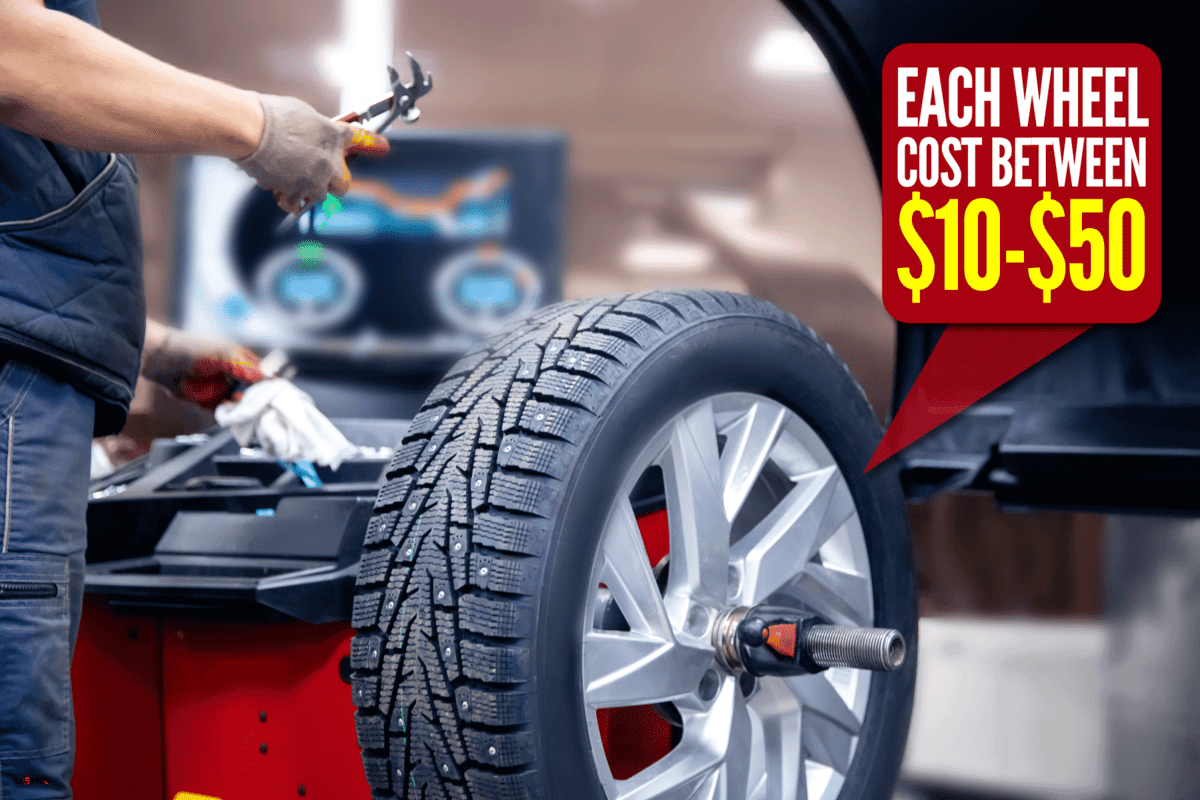
When buying new tires, the fitting fee frequently includes the price of tire balancing. Therefore, it's technically free with new tires.
For the installation of new tires, some stores charge a flat fee. Others separate it into tire and fitting charges. Additionally, they might charge extra for wheel alignment and balance.
You might anticipate paying between $10 and $50 for each wheel, depending on a few different criteria. On average, you should expect to spend roughly $40 to $200.
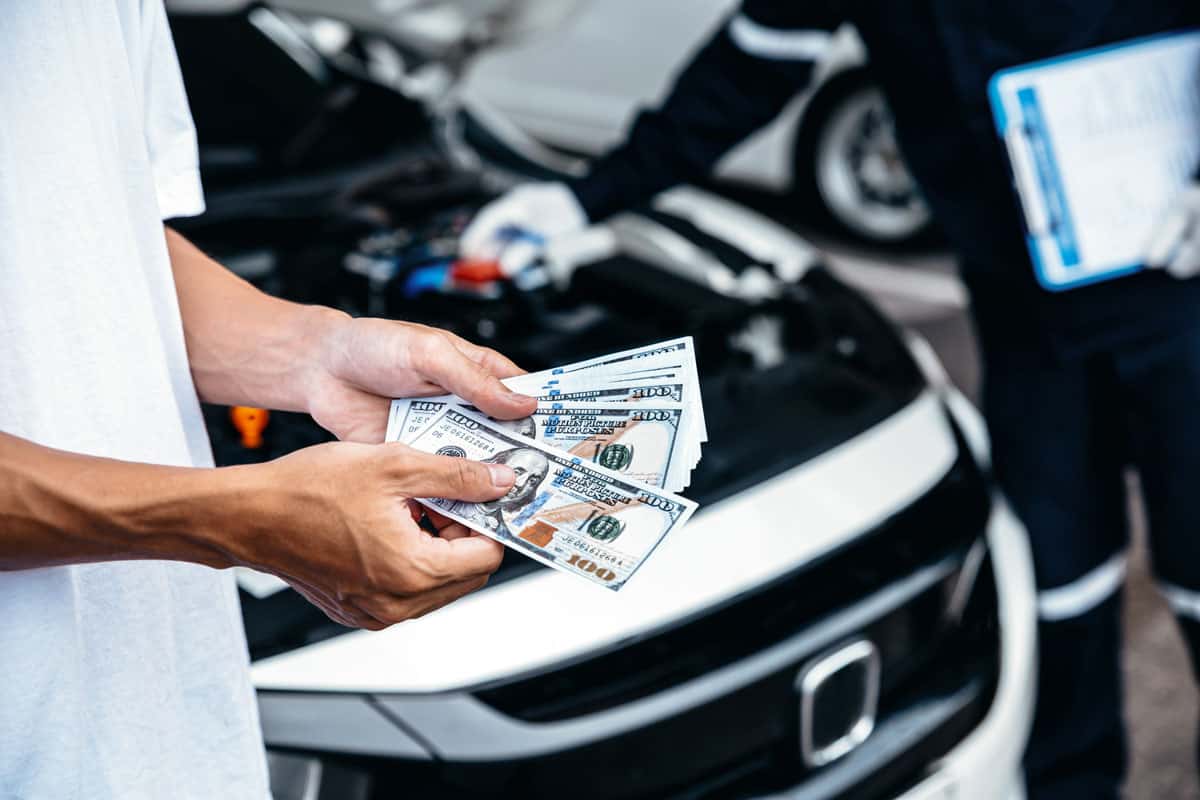
Labor makes up the bulk of the expense of tire balancing, which shouldn't be too expensive on its own. You'll be charged per minute for the technician to lift the automobile, take out the wheels, balance them, and then put everything back together.
Conclusion
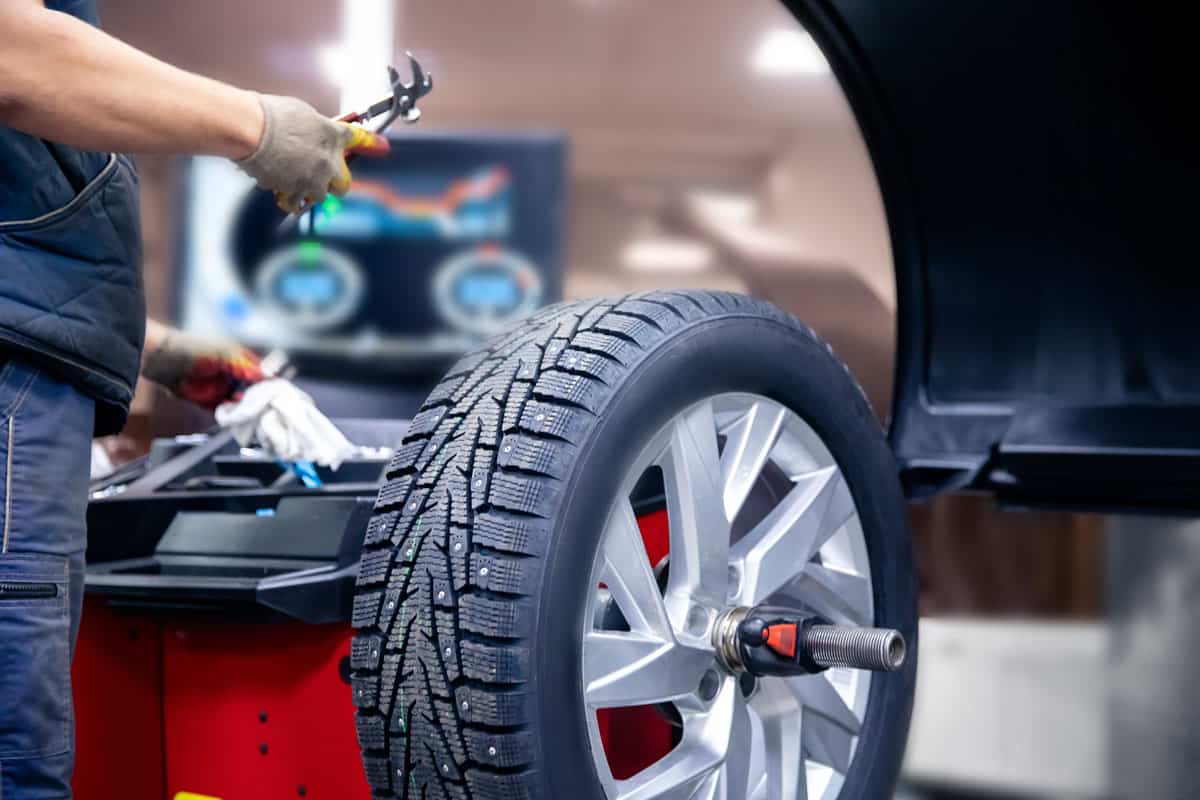
If you just had your tires balanced and are experiencing tire-related issues, it may be due to a bad tire or other causes. You should have the car repaired as soon as you can.
For more information, read our other tire-related posts:

